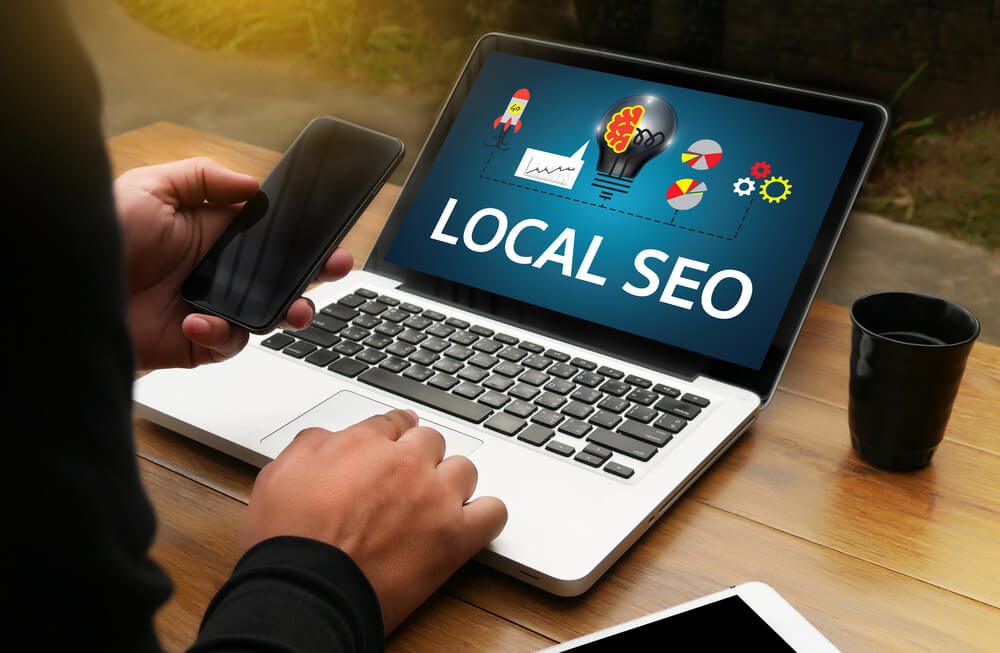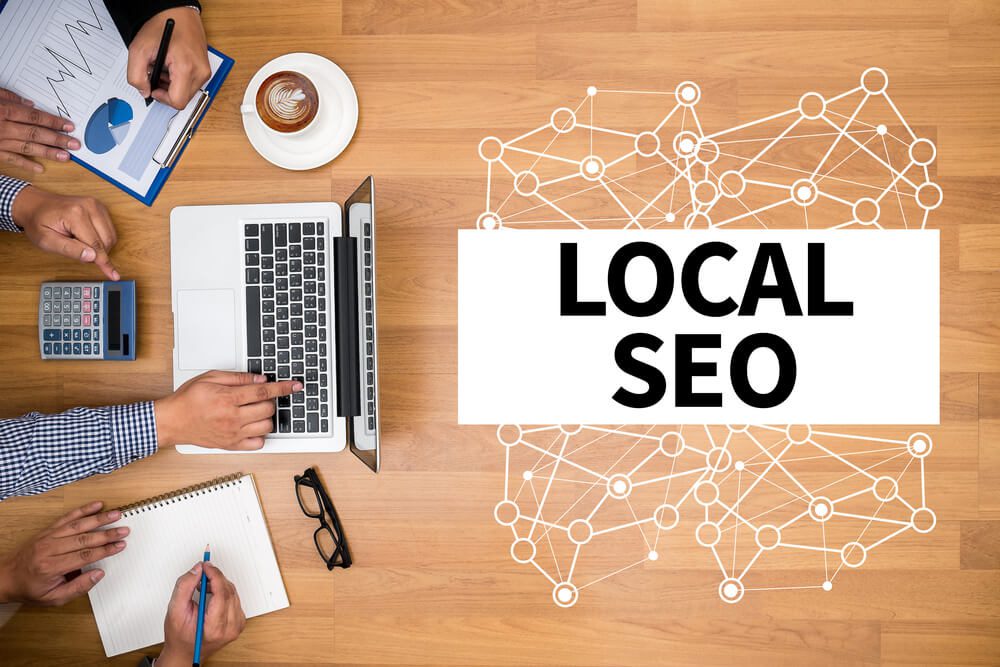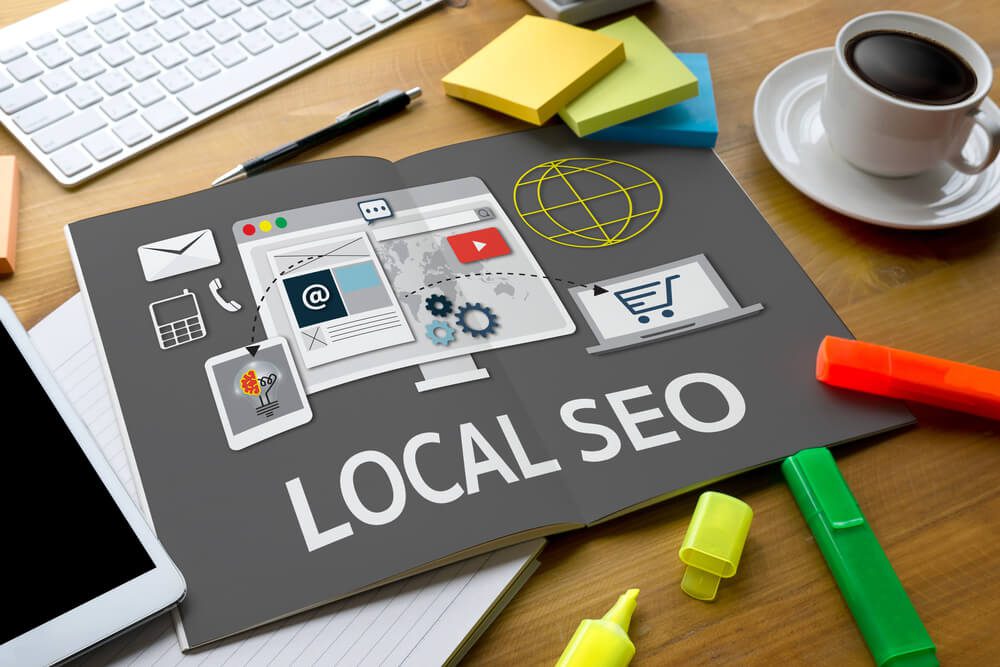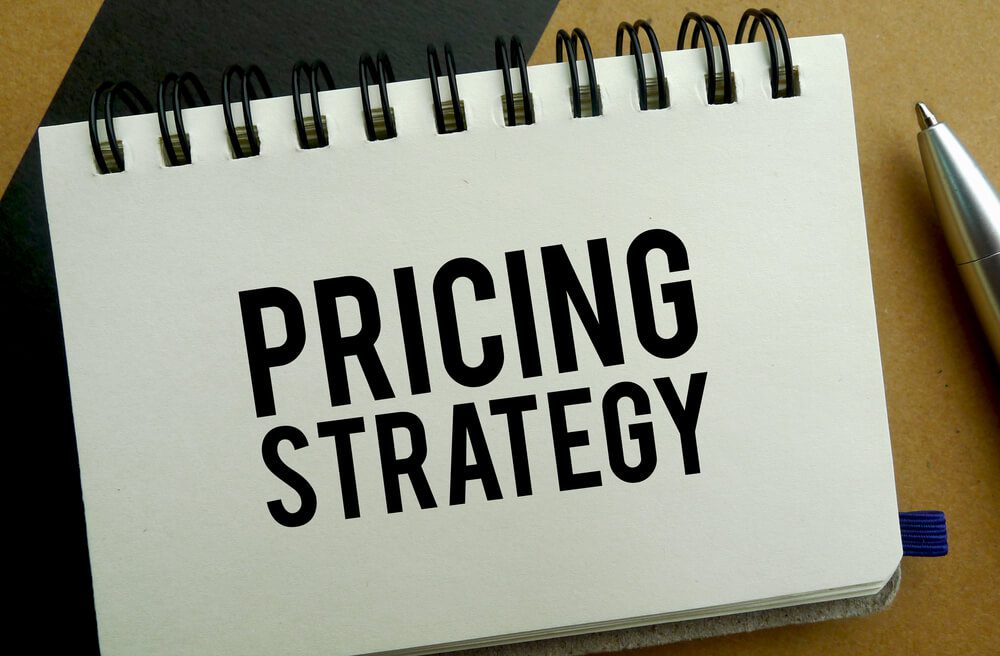
Local SEO Pricing: How Much Should You Spend on Your Local SEO?
Not all SEO is created equal. Every company with any level of web presence (and that should be every company!) needs to do continuous SEO to help grow their business. SEO can bring traffic to your site from around the globe and help your company bring in business from markets that you may never have dreamed possible.
What if your business’s clients are more likely to come from across the street rather than from across the ocean? Do you still need to do SEO? The answer is yes, SEO is still a vital marketing tool for almost every business. However, businesses that draw most or all of their customers from the nearby area need to focus on local SEO.
Local SEO is a subcategory of SEO that focuses on optimizing your online presence so that your business will show up higher on search results pages for local searches. The higher ranking will result in more local web traffic which will, in turn, result in more customers for your business.
Local SEO is designed to position your site or your content to show up higher in the results from searches people are more likely to do for local businesses. This includes searches for directions, business hours, and searches that end with local tags such as “near me” or “in Los Angeles”.
In this local SEO guide, we will focus on giving you a little background on what local SEO is, what types of businesses should focus on it, and provide more information and context related to local SEO pricing and how much you should spend on a local SEO plan.
 Search engine optimization (SEO) is the process of optimizing your website and online content for the benefit of the algorithm Google (and other search engines) use to determine how high a link to your page appears on a search engine results page (SERP). Showing up high on a SERP organically (i.e., without paying for an ad at the top of the page) helps increase both the quality and quantity of traffic to your page.
Search engine optimization (SEO) is the process of optimizing your website and online content for the benefit of the algorithm Google (and other search engines) use to determine how high a link to your page appears on a search engine results page (SERP). Showing up high on a SERP organically (i.e., without paying for an ad at the top of the page) helps increase both the quality and quantity of traffic to your page.
Professional services companies that specialize in the local area, or just happen to draw the majority of their clients from nearby, also need local SEO. This group includes local law firms, real estate agents, and insurance providers, among others. Lastly, groups with multiple locations, chains, and franchises can benefit a great deal from SEO. A regional, New York-based tire shop with locations in Buffalo, Rochester, Syracuse, and Albany could greatly benefit from doing local SEO for each branch.
 If you are part of a business that will benefit from local SEO, it should be clear that this is a worthwhile investment to make. But how and where should you invest your local SEO budget? Here we will look at the key areas where companies need to spend their local SEO money and give some broad local SEO pricing information.
If you are part of a business that will benefit from local SEO, it should be clear that this is a worthwhile investment to make. But how and where should you invest your local SEO budget? Here we will look at the key areas where companies need to spend their local SEO money and give some broad local SEO pricing information.
 Just as all forms of SEO are not created equal, neither is local SEO pricing. As you can see above, the areas where you will spend money for local SEO all have a wide range of pricing associated with them. Multiple factors influence how much a company might need to spend on local SEO. Here are a few of the main factors that affect local SEO pricing.
Just as all forms of SEO are not created equal, neither is local SEO pricing. As you can see above, the areas where you will spend money for local SEO all have a wide range of pricing associated with them. Multiple factors influence how much a company might need to spend on local SEO. Here are a few of the main factors that affect local SEO pricing.
A Quick Guide to Local SEO
 Search engine optimization (SEO) is the process of optimizing your website and online content for the benefit of the algorithm Google (and other search engines) use to determine how high a link to your page appears on a search engine results page (SERP). Showing up high on a SERP organically (i.e., without paying for an ad at the top of the page) helps increase both the quality and quantity of traffic to your page.
Search engine optimization (SEO) is the process of optimizing your website and online content for the benefit of the algorithm Google (and other search engines) use to determine how high a link to your page appears on a search engine results page (SERP). Showing up high on a SERP organically (i.e., without paying for an ad at the top of the page) helps increase both the quality and quantity of traffic to your page.
Local SEO vs. Standard SEO
The overarching goal of local and standard SEO is the same. You want to create more quality traffic to your site by appearing towards the top, or in the top spot, of a SERP when people search for something related to your business. Appearing in the top part of search results is paramount for a business because around 50% of all searchers only click on the top two organic search results on a page and around 33% of users will only click on the top result. Some users will scroll a little further but only 25% of searchers ever make it to the second page. Although the main goal of standard and local SEO is generally the same, that is where much of the similarity ends. The type of user each is trying to capture, the information each provides, and the strategies and tools used to execute each is quite different. Even the cost of standard SEO versus local SEO pricing is different. The point of standard SEO is to draw people in by offering useful information. Local SEO, however, provides users with hard information about a business, such as the business address, phone number, store hours, or directions to get to the location. It also helps a business to show up in localized searches. This is especially important because searches that include terms like “near me” or “close by” have increased by a whopping 900% in the last two years.Watch this video to learn about the Digital Authority Partners approach to local SEO!
Purchase Intent – the Holy Grail
The biggest difference between standard and local SEO, though, is the mindset of the person searching. Someone who finds standard SEO results usually does so by searching for general information related to a topic. They might be researching a purchase, but it is also possible they may just be casually looking, too. When someone searches for hard information about a business or for something “near me” or “in [city or town]” it is usually because they want to visit that business to make a purchase. This is known as purchase intent. Capturing consumers searching with purchase intent is incredibly valuable for a business because there is a direct correlation between purchase intent and sales. This is why local SEO is so valuable for certain businesses and why many businesses find that local SEO pricing is worth paying. Statistics back this up. Around 50% of all “near me” searches and just under 90% of local searchers who use a mobile device visit or contact a business within 24-hours of their search. Most importantly, almost 30% of local searches directly result in a purchase compared to less than 10% of non-local searches. That is the power of the purchase intent captured by local SEO. An example of a business that can benefit more from traditional SEO is a company that sells organic pet treats online. They will want to rank high for content when people search for things like “healthy treats for dogs”. The searcher may want to buy dog treats right then and there or might just be looking for some general info about keeping their dog healthy. Either way, this company comes up first and thus gets more traffic. If your business is a local hair salon, you want to emphasize local SEO. When people search, “hair salon near me”, chances are they want to get a haircut soon and are not just looking for information on the latest hairstyles. This purchase intent will make a big difference in the conversion rate and the ROI of your SEO efforts.Who Needs Local SEO?
The hair salon in the example above is a perfect example of one of the types of businesses that can reap huge rewards from local SEO. Any business that provides an in-person service that can’t be done online can benefit from local SEO. Some examples of this type of business are: doctors, dentists, masseuses, pet care, or bars and restaurants. Services that come to you, like plumbers, electricians, contractors, pest control, or landscaping businesses can benefit from this type of SEO, too.Schedule Your Free Consultation
Looking To Meet Now? Schedule A Meeting Today
The Google Map Pack
Around 48% of all U.S. Google searches are solved without the user clicking on any link. One of the biggest reasons for this pertains to local SEO and the Google Map Pack, also known as the Google 3-Pack. When you google a local business, 93% of the time the first result that comes up is a local map with the top three local businesses that fit your search criteria. The map and the top three results are a major reason why so many searches don’t result in clicks and the clicks that do come are heavily weighted to these top results. Over 40% of the clicks go to the results featured in the Map Pack. Getting your business listed on the Google Map Pack is a huge piece of local SEO and should be a top priority. You need to focus on a few points in order to be listed in the Google Map Pack. Creating or verifying your Google My Business account is the first step. This is followed by verifying your address information with Google. Optimizing your listing on other business directories and optimizing your website for local searches are the next key pieces of claiming your coveted spot in the Google 3-pack.Areas Where Companies Need to Spend on Local SEO
 If you are part of a business that will benefit from local SEO, it should be clear that this is a worthwhile investment to make. But how and where should you invest your local SEO budget? Here we will look at the key areas where companies need to spend their local SEO money and give some broad local SEO pricing information.
If you are part of a business that will benefit from local SEO, it should be clear that this is a worthwhile investment to make. But how and where should you invest your local SEO budget? Here we will look at the key areas where companies need to spend their local SEO money and give some broad local SEO pricing information.
1. Directory listings
The Google algorithm doesn’t look at your site just to ascertain what your business does and where it is located. It scans a variety of trusted sites around the internet to confirm that your business is where you say it is and does what you say it does. A big chunk of the sites the algorithm looks at are business directories. It is important that all the information on these directories matches your business’s Google account information and is always correct and up-to-date. Getting listed on top directories such as Facebook, LinkedIn, Yellowpages.com, Yelp, BBB.org, Angi, BizJournals, and others, and managing these listings will generally cost a company $50 to $150 per month.2. Google My Business
This is similar to directories and shouldn’t cost an additional fee on its own but it is so significant to local SEO that it merits its own discussion. Google My Business is a free tool that Google offers users to manage their business information on Google. If you haven’t already, you need to claim or create your account, verify all the info, and fill out every field completely. Make sure all your info is presented in the exact same way on other directories as it is on Google My Business and that you optimize your account by using local primary and latent semantic indexing (LSI) keywords. This will help increase your odds of taking a spot in the Google Map Pack by up to 20%.3. Content
It is important that you have robust content on your local pages. This content should be optimized for local search and appeal to your target market in a local area. Performing market research in your area is the best way to make sure your content speaks to the people you are targeting. This content can appear in a wide range media such as blog posts, whitepapers, infographics, videos, podcasts, and more. The important part is making sure it ranks for local keywords. The good news is, it should be easier to rank for local keywords, like “best podiatrist in Cleveland” than it would be to rank for general SEO keywords in your industry. Creating content can be done on your own if you have the time but if you pay a professional to put together a great monthly content package for you, you can expect to spend anywhere from $500 to $5,000 a month depending on your needs.4. Authority backlinks
Backlinks come from content on high authority sites that link back to your site. These are a key piece of SEO because Google values them highly as a way to establish the trustworthiness of your site. For local SEO, you want to target local blogs and sites to get backlinks because they will help establish your local authority. The local SEO pricing for a monthly backings program is usually somewhere between $150 and $1,500 a month.5. Locations
You should have pages on your site for everything you do (every product or service category) and pages for everywhere you do it. If you are a family dentist practice in Northeast Texas with multiple locations, for local SEO purposes, you should have a family dentistry Dallas page, a family dentistry Fort Worth page, and a family dentistry Arlington page. When you have a business with multiple locations, you have more work to do (and more money to spend to do it) but some of the work will scale. This means the more pages you have, the less you might pay per page but you’ll still pay for every page. You are most likely looking at $750 to $1,500 per page.3 Factors for Local SEO Pricing
 Just as all forms of SEO are not created equal, neither is local SEO pricing. As you can see above, the areas where you will spend money for local SEO all have a wide range of pricing associated with them. Multiple factors influence how much a company might need to spend on local SEO. Here are a few of the main factors that affect local SEO pricing.
Just as all forms of SEO are not created equal, neither is local SEO pricing. As you can see above, the areas where you will spend money for local SEO all have a wide range of pricing associated with them. Multiple factors influence how much a company might need to spend on local SEO. Here are a few of the main factors that affect local SEO pricing.
1. Site Health
Some of the costs of local SEO will be determined by your starting point. If you have a website that is already relatively well-optimized for SEO, you likely won’t have as steep a hill to climb for your local SEO efforts. This will not only save you from spending money but it will also increase the ROI for your local SEO efforts. However, if your technical SEO is a mess – with broken links, slow page speeds, not optimized for mobile, etc. – you will need to devote more money and effort into cleaning that up so your local SEO efforts will be more effective.2. Business Reputation
Online reviews have a significant effect on SEO. The higher the volume of reviews you have, the more positive reviews you have, and the quicker and more effectively you respond to negative reviews, the better your local SEO will be. If you are a brand new business, your local SEO pricing may be higher because there has to be a foundation of customer reviews to help your local SEO. This will take time and money. A preponderance of bad reviews will increase your costs. In this case, investing some time and resources into reputation management is a good idea.3. Number of Locations
We touched on this fact earlier but it is worth mentioning again, there may be economies of scale for larger businesses with many brick and mortar sites but in these cases, it will take a bigger local SEO budget to deal with them all. You want to manage and produce content for each individual page to truly make your local SEO work.Figuring Out What Local SEO Pricing Makes Sense for You
The main question addressed in this guide is, how much should you spend on your local SEO. While you probably won’t walk away from reading this with a specific dollar figure in mind, hopefully, you now understand that the true answer to that question is “however much you need in order to gain the extraordinary benefits of local SEO”. Local SEO is different from standard SEO in many ways but the biggest difference is that local SEO captures consumers with purchase intent. This makes the ROI on local SEO very high compared to standard SEO and many other forms of marketing. If you are a business that draws consumers from your local area, you can’t afford not to do local SEO, or to not be in the Google Map Pack. Several additional factors contribute to determining what local SEO pricing makes sense for different business types. It depends on what kind of local SEO you want to do – directories, content, backlinks, location pages – and what you are starting with in terms of site health, reputation, and your number of locations. No matter what your budget though, doing your best to maximize local SEO is a critical marketing initiative in 2022 and beyond. You can certainly carry out some aspects of local SEO yourself, but the best way to knock your local SEO out of the park is to spend what you can with a professional local SEO specialist. If you want to learn more about how local SEO can help grow your business, check out the local SEO experts at Digital Authority Partners to get more information.Want To Meet Our Expert Team?
Book a meeting directly here



